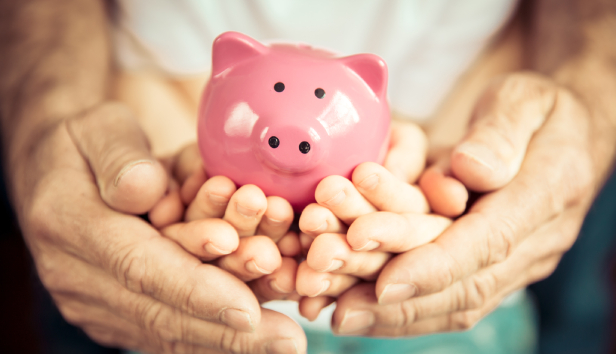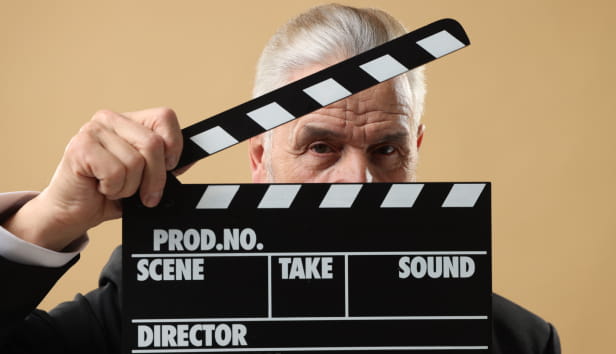How much would you pay for your favourite pop star’s shoes? One bidder at a recent Christie’s auction in New York paid more than $94,000 (£75,000) for Elton John’s silver platform boots.
Last year, a sale of Freddie Mercury’s personal effects, at London auction house Sotheby’s, netted nearly £40 million, with his silver moustache comb proving to be a surprise hit.
With an estimate of just £400-£600, the Tiffany comb looked like a reasonable price for a piece of music history, but a bidding frenzy resulted in a fan parting with a huge £150,000 to secure it.
You don’t need to own a flamboyant stage costume to earn a bit of cash, as more commonplace music collectibles can also make you some money.
Music Historian and Memorabilia Expert Rob Fiddaman says “Collectors like to buy stage-worn costumes or a guitar used at a gig. You might not have that hanging around the house, but smaller items such as records, posters and autograph books can be valuable too.”
Music memorabilia collectors are discerning types and while condition is key, you need to be able to prove they're genuine. “Provenance is very important,” says Fiddaman, also author of Buying Into Britpop.
“It adds 40% more to the value because buyers want to know the item is genuine. If you had Beatles autographs...write a letter to explain how you got them and then get them verified by another specialist.”
When it comes to vinyl, collectors prefer records in mint condition, which means no scratches and a perfect sleeve.
“Condition is paramount. If a record’s mint, it should be sealed, or opened but hardly played,” says Fiddaman.
He recommends you dig out your vinyl from the 1970s as some albums, like The Sex Pistols’ God Save The Queen and David Bowie’s Diamond Dogs are highly collectible.
John Lennon’s ‘lost’ guitar is up for auction in New York, after it was found in an attic after 50 years, and music memorabilia from the 1960s is still as popular as ever. But in recent years, there’s been a shift towards a later era, with buyers now keen to invest in items from the 1990s.
Fiddaman says: “At the moment, the 1990s are popular, especially with the interest around Oasis. Their memorabilia has skyrocketed [in value] in recent years. Early tickets from their smaller gigs are rare and collectible.
“Now vinyl copies of their 1994 debut album, Definitely Maybe, are going for as much as £250, which is unbelievable when you think that some Beatles albums don’t achieve that.”
Fiddaman also highlighted how a variety of well-kept memorabilia has endured in popularity. The Beatles is an obvious choice, but also bands like The Jam and The Specials from the 1980s are showing good levels of value.
Fans are now more likely to request selfies with their idols, but the good, old-fashioned autograph is still in high demand.
A cardboard sleeve of Led Zeppelin’s Houses of the Holy album, signed by the band, sold for £15,000 at auction last year, but that didn’t even include the record.
Part of the reason for the high price is that it’s rare to find an item signed by all four band members since drummer John Bonham died in 1980.
“I’ve seen a Live Aid programme from 1985, signed by everyone, and the buyer was asking for £10,000. An original t-shirt from the event is a couple of hundred pounds,” says Fiddaman.
If you’ve been lucky enough to get an item signed, you’ll find it has more value if it doesn’t have your name on it. “If it’s dedicated to you that will affect the value,” says Fiddaman.
“Of course, if you meet Paul McCartney, you’re going to want him to sign something personally for you, so just enjoy it.”
.jpg?sc=max&mw=800&h=450&la=en&h=731&w=1300&hash=43B0BE22F6D93741126AB33E3F3D9884)
Concert tickets, flyers and posters are popular with buyers, particularly if you’ve something from an early gig where the band became more famous – or stopped touring.
“A ticket from a Sex Pistols gig could be worth thousands of pounds because there weren’t many in circulation,” says Fiddaman.
“If a ticket was for quite an important gig such as Oasis at Camden Water Rats in 1994, that could be worth quite a bit. People can pay hundreds of pounds for an MTV ticket if it’s signed.”
If you have a collectible poster, it’s better to keep it in its existing condition, rather than trying to restore it. Rips might devalue it a little, but authenticity is important.
“If you have a Beatles film poster, like A Hard Day’s Night or Help!, that could be worth a couple of thousand pounds - and an original concert poster would be more,” says Fiddaman.
“But leave them as they are. I’ve seen people with rare Beatles posters who’ve had them washed and restored and have all the fold lines taken out, but that will affect the price because they’re no longer considered original.”
A film or TV documentary about an artist’s life can attract greater interest in memorabilia, and you’ll also notice fans looking for items if their favourite artist has just passed away.
“When David Bowie died, his autographs were in big demand and then 18 months later the prices levelled out,” explains Fiddaman. “It’s because when somebody famous dies, people think: ‘I used to love them and I want to buy something of theirs.’ This is where the prices go a bit wild.
“At the moment, there’s a lot of interest in Amy Winehouse. Prices weren’t that high, but now that ‘Back to Black’, the film about her life, has come out, the value has risen.”
Music memorabilia isn’t just nostalgic clutter, it’s a valuable piece of history, so it needs to be stored properly. “Don’t put your records up in the roof or shed because they can warp,” says Fiddaman.
“Buy plastic storage boxes and keep them clean and dry. Or even better, have them framed and out on display. They’re there to enjoy, aren’t they?”
If you have something of sentimental value, you may very well want to keep it but, if you decide to sell, it’s important to do your research before setting a price.
“Sometimes it’s very difficult to put a value on items because it depends on who’s looking for it,” says Fiddaman. “Don’t always go by eBay prices: people can put any reserve on their auctions, so take a look at sold prices instead.
“If you think you have something special, go to a reputable auction house, such as Christie’s or Bonhams, or a smaller, more specialised seller.”
Music Historian Rob Fiddaman tells you what to look for:
If you want to spend less than £100… Start by going to your local record shop and buy some early seven inches by a band you like.
If you have £100… Try and buy a rare vinyl record you like or something that’s signed. If there’s a misprint on vinyl or it’s printed up wrongly, that’s very collectible.
If you have £5,000…For that, you could get a lovely set of Beatles autographs, but if I was investing I’d buy something more modern. I’ve got one of Ed Sheeran’s guitar pedals and a t-shirt he wore in 2011, which I bought when his mum took a load of his things to a local charity shop.

There’s billions sitting unclaimed in shares and dividends – find out if any belongs to you.

From their first savings account to their first home, find out how your gifts can make the biggest impact for your grandchildren
.jpg?la=en&h=354&w=616&hash=653168623B92F3457D40ACA115D37B3E)

.jpg?la=en&h=354&w=616&hash=458B0288E9852F4B63A433E2FDD375E7)



We're here to help you make the most with your money. With a rage of financial services designed with over 50s in mind.
.jpg?la=en&h=650&w=1400&hash=E0CC621D4072563826717CB4579B6BD2)